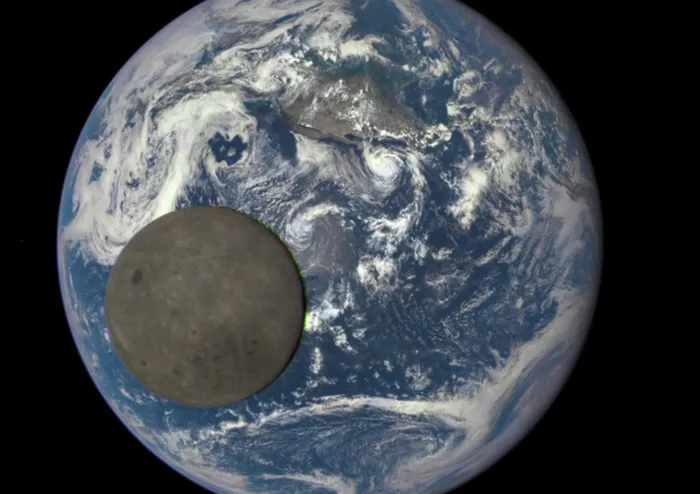The dark side of the Moon

The far side of the moon, illuminated by the sun as it crosses between the DSCOVR spacecraft's Earth Polychromatic Imaging Camera (EPIC) camera and telescope, and the Earth - one million miles away. The far side of the moon, illuminated by the sun as it crosses between the DSCOVR spacecraft's Earth Polychromatic Imaging Camera (EPIC) camera and telescope, and the Earth - one million miles away.
London - A drab grey-brown disc contrasting starkly with the brilliant blue and white Earth beneath it, this is a unique and stunning view of the side of the Moon we do not normally see.
The remarkable image is one of a series taken from one million miles away by Nasa’s Deep Space Climate Observatory last month.
It shows the dark side of the Moon outlined against the Pacific, with North America and the North Pole to the top.
As the Moon orbits the Earth, it rotates to keep its dark side permanently pointed away from our view. Although it gets the same amount of sunlight as the near side, it was called the dark side as it faces away from Earth and was unknown until the first pictures came back from the Soviet spacecraft Luna 3 in 1959.
The two sides of the Moon are quite different. Around 30 percent of the near side is made up of “seas” – huge flat areas once thought to be water. The dark side is mainly craters.
Daily Mail